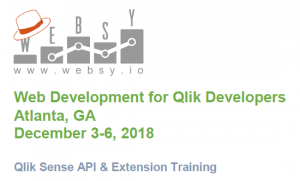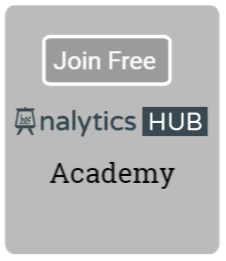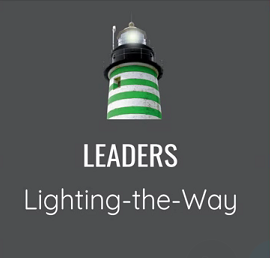 Ever since I read Karl Pover’s article on his journey to become a Qlik Sense web developer, I am intrigued by the vast ocean of possibilities that Qlik Sense can offer to a Qlik developer.
Ever since I read Karl Pover’s article on his journey to become a Qlik Sense web developer, I am intrigued by the vast ocean of possibilities that Qlik Sense can offer to a Qlik developer.
He has a series of articles to inspire Qlik developers to learn web fundamentals and Qlik Sense APIs that you can use to build mashups, extensions or custom web content that can leverage data and visualization with the powerful associative experience.
It’s always a tall order to master so many aspects of Qlik Sense including list of capability and engine APIs along with HTML, CSS and JavaScript.
Learning JavaScript alone can be daunting for a Qlik developer.
Enter WebSy’s web development for the Qlik developer course taught by none other than the man with the hat, Rob Wunderlich.
Most Qlik developers know Rob since he is a well-known Qlik Luminary.
Likely, you have downloaded his must-have Document Analyzer to fine tune your app.
If you are a Qlik developer and working in any southern states, here’s a good news — Rob will be teaching Qlik Sense web development course for Qlik developers from December 3-6 in Atlanta.
If you are a Qlik developer and wanted to embark on a journey to learn Qlik Sense web development, read on.
Why should a Qlik developer learn to become a Sense Web Developer?
Rob:
QS provides many interesting opportunities to leverage and reuse your Qlik Sense content and data. For example, it’s relatively easy to embed visualizations into existing web pages such as a company portal or a customer facing site. These embedded objects use the full power of Qlik selections and the associative model as well as security.
It’s also possible to mix content from different systems to produce real time charts that show balances using live currency rates or up to the moment status. You can also use the full power of the associative engine and your Qlik data model to generate data that get’s visualized inside or outside of Qlik, using any visualization library or technique you require. Or perhaps you won’t visualize the data at all, but rather pipe the data into another system or transaction flow. The possibilities are enormous. I refer to these various possibilities generically as “Qlik Sense integrations”.
Why learning Qlik APIs is so important for a Qlik developer and how that can be best leveraged by organizations that have both QlikView and Qlik Sense applications?
Rob:
Qlik Sense is a very open system and there are many APIs. Until you invest some time in getting introduced to the APIs, it can be difficult to fathom the potential and identify the specific opportunities for your organization.
Many Qlik Developers think “visualization extensions” when they hear APIs. That’s part of it, but there is much more. In a nutshell, it’s important to understand what’s available, consider the potential for your organization, and understand the specific direction and skills required to move forward.
Learning new technology always is daunting to all of us. What is your advice to a QlikView developer who wants to learn HTML, CSS and JavaScript but finding it like a mountain to climb?
There are plethora of courses on web technologies and the Qlik Branch even has some tutorials on how to get started with APIs. What makes your course unique for a QlikView developer who wants to jump start learning web development in Qlik Sense?
Rob:
The web technologies HTML, CSS and JavaScript are a very large topic. Fortunately, only a small subset is required to get started and be productive with the Qlik APIs. In our “Web Dev for Qlik Dev” course, we start with an introduction to HTML/CSS/JavaScript and focus only on the details required to get started with Qlik Sense. We assume no prior experience with web development.
You can learn HTML/CSS/JavaScript from any number of on-line or classroom courses, and they will likely go much deeper than our course. But our focus is is to get you productive with Qlik integrations.
You may find that you’ll want to follow up with more study when you start a specific project and have focus. I’ll highlight some resources in the course. Likewise, Qlik offers some great tutorials on accomplishing specific API tasks.
These are task focused and assume some experience with web development. The goal of our course is to survey what’s possible, explain the Qlik API structure and ecosystem, and get you enabled to start your own integration project. We’ll be doing many hands on examples in the class and students come away with example code and resource links, as well as the course text.
I hope that this conversation with Rob can inspire you to take your QlikView skill to a next level by learning web development to extend and integrate the power of associative engine along with aesthetically pleasing Qlik Sense visualizations to other web applications in your organization.
You can reach out to Rob or register here.




